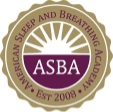In some cases, patients may benefit most from one of several procedures designed to provide permanent relief from the effects of sleep apnea. The basic goal of sleep apnea surgery is to increase the size of the airway, making it easier for patients to breathe during sleep, and more difficult for the body to interfere.
Listed below are the procedures that can be used to treat sleep apnea.
Tracheotomy
During a tracheotomy, a surgeon creates a direct opening in the windpipe to completely avoid any danger of throat obstruction. The doctor then inserts a tube into the opening to be used for breathing only during the sleeping hours. Patients will be able to breathe and speak normally during the daytime. Although a tracheotomy is reserved for severe cases of sleep apnea where other more conservative options are unsuccessful, the relief from sleep apnea's dangers and risks is permanent and always effective.
Uvulopalatopharyngoplasty (UPPP)

During the UPPP procedure, a surgeon removes a certain amount of soft tissue on the back of the throat and palate in order to minimize the risk of the airway collapsing during sleep. The tonsils and part of the uvula will be extracted also. Essentially, the patient's throat is enlarged for easier breathing. The UPPP is performed using general anesthesia. UPPP is done rarely today because of dismal results in treating apnea and high morbidity of the surgery.
Laser Assisted UP (LAUP)
The laser assisted UP procedure, or LAUP, uses the same principles as the UPPP, but uses a laser to remove uvula, throat and palate tissue. LAUP is considered a mini-version of the UPPP as this procedure is recommended for patients who already have their tonsils out. Only local anesthetic is needed, and healing time is quicker with this procedure. This procedure is often quite painful though less pain than UPPP. It is also rarely successful in treating apnea.
Somnoplasty
Somnoplasty can be used to tighten and reduce soft palate tissue, turbinates and the base of tongue.
Tongue Reduction Surgery
A tongue reduction procedure, median rhomboid glossectomy is helpful for reducing apnea but long term results are only fair and surgery is radical. A tongue reducing surgery taking a wedge out of the front of the tongue is easier but removes most of the taste buds leaving foods with a bitter taste. An alternative is somnoplasty where a surgeon uses a small probe containing radiofrequency energy which is targeted at the base of the tongue. The energy waves injure the tongue tissue causing the tissue to heal and contract, effectively reducing the overall size of the tongue and allowing the patient to have a bigger opening for airflow. C-PAP is absolutely indicated following surgery to prevent total airway blockage secondary to swelling that takes a few days to resolve.
Tonsillectomy and Adenoidectomy
During a tonsillectomy and adenoidectomy, a surgeon will remove the tonsils and adenoids, creating more space for airflow and reducing the opportunity for tissue collapse. This procedure is often recommended for children with sleep apnea or heavy snoring problems. Orthodontic widening of the maxilla in young children not only increases the oral airway but can significantly enlarge the nasal airway. Extraction of premolars to make room should be avoided in all cases as that will reduce the size of the mouth and make future problems more likely.
Bimaxillary Advancement
During a bimaxillary advancement, a surgeon will make incisions inside the mouth, separate the upper jaw from the skull, manipulate and reposition the bones of the upper jaw in order to enlarge the airway. At the same time the lower jaw is cut into three pieces and repositioned to elongate the lower jaws positioning the tongue and palate forward to minimize or eliminate the possibility of a collapsed airway. The enlarged mouth also reduces the chance that the tongue will interfere with correct breathing.
This is the most useful surgical procedure and can give 100% relief. Successful oral appliance therapy can predict success of bimaxillary advancement.
Genioglossus and Hyoid Advancement (GGA)
A surgeon uses GGA procedure to pull the tongue muscles forward and prevent the collapse of the airway. By tightening the front tendon in the tongue, the procedure decreases the chance that the tongue will collapse and inhibit breathing. GGA involves an incision inside the mouth, and the creation of an avenue in the bone that is used to pull the front tendons forward. The result is an enlarged space between the rear of the tongue and the patient's airway. GGA is often recommended as a supplemental procedure used in addition to another procedure or oral appliance.
Learn more about sleep apnea surgeries and their effectiveness by calling Think Better Life at 1-847-533-8313 today. Dr. Ira Shapira looks forward to meeting you and discussing all of your treatment options.






